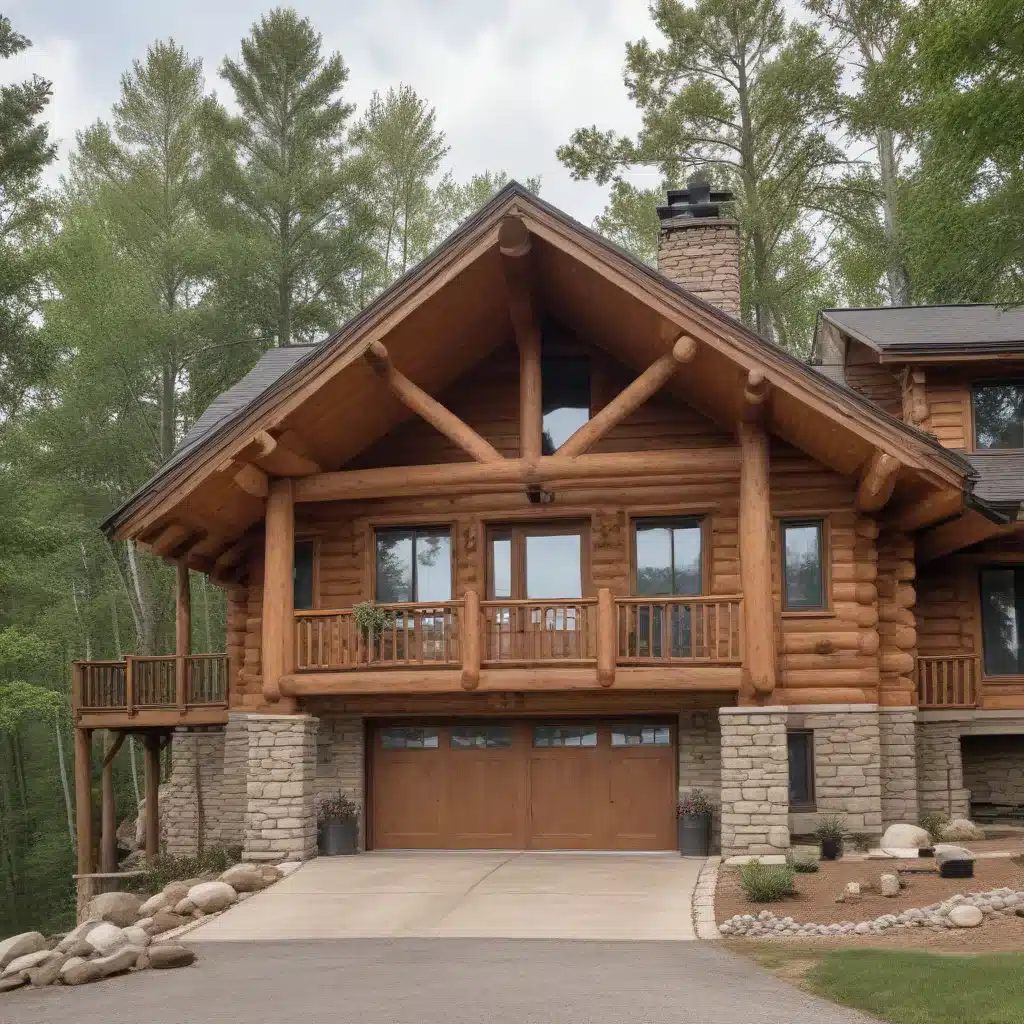
Sustainable Building Techniques for Log Home Construction
When it comes to log home construction, embracing sustainable building practices is crucial for creating energy-efficient and environmentally friendly living spaces. From the selection of natural materials to the integration of cutting-edge technologies, the modern log home industry has evolved to meet the growing demand for greener, more energy-conscious housing options.
One of the primary advantages of log homes is their use of renewable timber resources. Properly sourced and managed, timber is a renewable and biodegradable material that can be harvested and replenished in a sustainable manner. By choosing locally sourced, certified wood products, log home builders can minimize the environmental impact of material transportation and support local economies.
Jorgensen Log Homes, a leading manufacturer of log cabin kits and custom log homes, has pioneered the use of advanced building techniques that prioritize energy efficiency and environmental responsibility. Their proprietary SmartLog Wall System utilizes strategic log placement and specialized insulation to create highly insulated wall assemblies, reducing the energy demands of the home while maintaining the aesthetic appeal of a traditional log structure.
In addition to the log construction, the selection of eco-friendly materials plays a crucial role in the overall sustainability of a log home. Builders may opt for natural, low-emission finishes, such as plant-based paints, sealants, and stains, to minimize the introduction of harmful chemicals into the living environment. The use of reclaimed or recycled materials, such as salvaged timber or repurposed metal hardware, can further enhance the sustainable profile of a log home project.
Integrating Energy-Efficient Technologies
Beyond the building materials and construction techniques, modern log homes are increasingly incorporating cutting-edge technologies to optimize energy performance and reduce environmental impact. The integration of smart home systems, advanced insulation, and renewable energy solutions are becoming integral components of log home design.
Smart Home Integration: The combination of log home construction and smart home technologies has transformed the way homeowners experience and interact with their living spaces. Automated lighting, security systems, and energy management solutions can be seamlessly integrated into log homes, enhancing convenience, safety, and energy efficiency without compromising the timeless charm of the log cabin aesthetic.
Advanced Insulation: The strategic placement of high-performance insulation, such as spray foam or structural insulated panels (SIPs), can significantly improve the thermal efficiency of log home envelopes. These insulation techniques help to maintain comfortable indoor temperatures, reduce heating and cooling demands, and minimize energy consumption.
Renewable Energy Solutions: The integration of renewable energy sources, such as solar panels or geothermal systems, can further elevate the energy efficiency and sustainability of log homes. By generating on-site clean energy, homeowners can reduce their reliance on grid-supplied electricity and lower their carbon footprint.
Costs and Considerations for Eco-Friendly Log Homes
When it comes to the costs associated with building an eco-friendly log home, there are several factors to consider. The initial investment in sustainable materials, advanced building techniques, and energy-efficient technologies may be higher than traditional construction methods. However, the long-term savings in energy costs and the positive environmental impact can often justify the upfront investment.
| Cost Considerations | Estimated Ranges (USD, as of September 2024) |
|---|---|
| Log Home Kit (2,000 sq. ft.) | $150,000 – $250,000 |
| Sustainable Materials (e.g., low-emission finishes, reclaimed timber) | 10% – 20% above standard materials |
| Advanced Insulation (e.g., spray foam, SIPs) | $10 – $20 per sq. ft. of wall space |
| Smart Home Integration | $5,000 – $20,000, depending on the scope |
| Renewable Energy Systems (e.g., solar panels, geothermal) | $20,000 – $50,000, based on system size and location |
It’s important to note that these cost estimates are approximate and may vary depending on the specific project location, regional labor and material costs, and the overall complexity of the log home design. Homeowners and builders should carefully evaluate the long-term cost savings and environmental benefits when making decisions about incorporating eco-friendly features into their log home projects.
Maintaining the Beauty and Efficiency of Log Homes
Preserving the timeless charm and energy efficiency of a log home requires ongoing maintenance and care. Regular inspections, preventative maintenance, and strategic upgrades can help ensure that the home continues to perform at its best while maintaining its aesthetic appeal.
Routine Log Home Maintenance: Periodic cleaning, sealing, and staining of the log surfaces are essential to protect the wood from weathering and prevent deterioration. Addressing any structural issues or damage to the logs promptly can help extend the lifespan of the home.
Energy Efficiency Upgrades: As technology continues to evolve, homeowners may consider upgrading their log home’s energy-efficient features, such as replacing outdated HVAC systems, upgrading insulation, or integrating newer smart home technologies to further enhance the home’s performance and reduce energy consumption.
Sustainable Material Replacements: When the time comes to replace or renovate certain elements of the log home, such as roofing, windows, or interior finishes, homeowners can explore sustainable material options that align with the home’s eco-friendly design.
By maintaining a proactive approach to log home care and continually exploring opportunities to enhance energy efficiency and sustainability, homeowners can ensure that their log home remains a beautiful, comfortable, and environmentally responsible living space for years to come.
Conclusion
The log home industry has embraced a new era of sustainable construction, where eco-friendly building practices, energy-efficient technologies, and a commitment to environmental stewardship are at the forefront of design and construction. By leveraging advanced building techniques, selecting sustainable materials, and integrating smart home systems, log home builders and homeowners can create living spaces that seamlessly blend traditional charm with modern, energy-conscious features.
As the demand for greener, more energy-efficient housing options continues to grow, the log home industry is poised to lead the way in providing homeowners with beautiful, comfortable, and environmentally responsible living solutions. By prioritizing sustainability and energy efficiency, log home enthusiasts can enjoy the timeless appeal of log cabin living while contributing to a more sustainable future.


